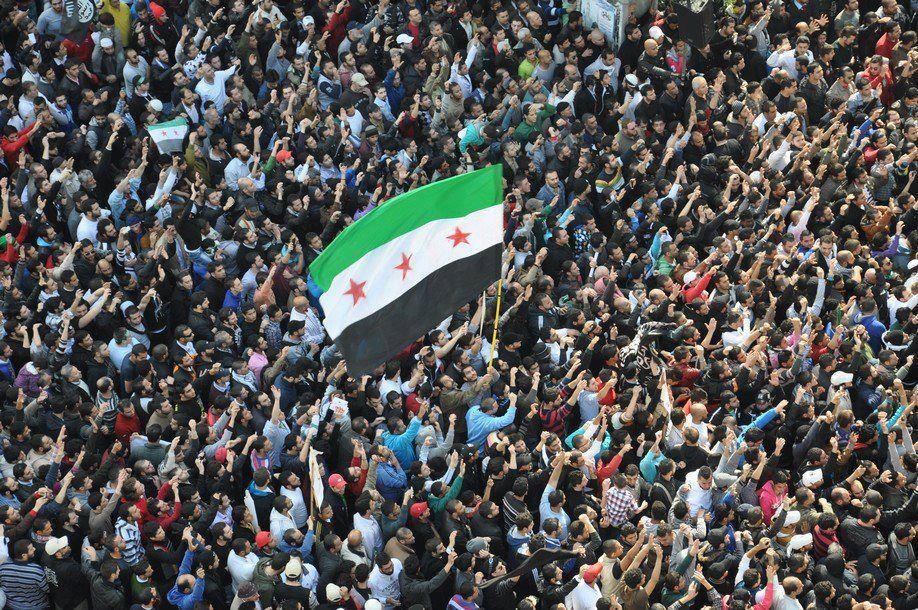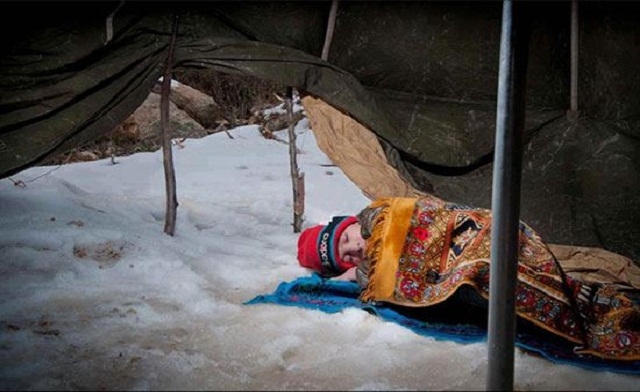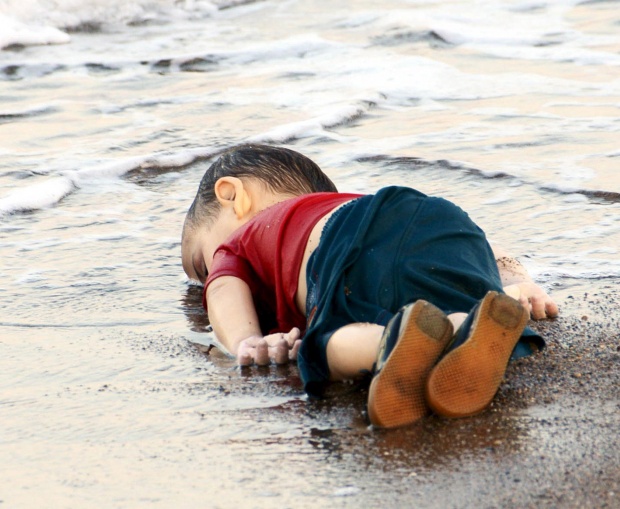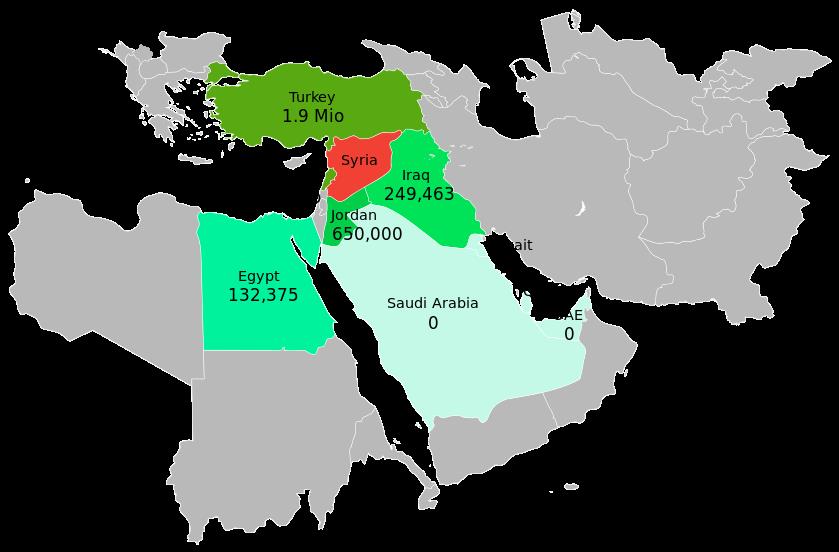IMS Focus _ The Crisis of Syri…
페이지정보
글쓴이 지중해지역원 조회 4,575 조회 날짜 19-06-04 16:11내용
The Crisis of Syrian Refugees
Mona Farouk M. Ahmed, Assistant Professor, Arabic Dept., Busan University of Foreign Studies
Introduction:
News about the Syrian Refugees recently became a hot issue that daily covered by the press all over the world. Actually all the time there were refugees moving to other countries and that was a reason for establishing the UN Refugees Agency which is called United Nations High Commissioner for Refugees (UNHCR). This agency is mandated to lead and co-ordinate international action to protect refugees and resolve refugee problems worldwide. Since then, UNHCR has offered protection and assistance to many refugees.
Actually, global migration patterns have become increasingly complex in modern times, involving not just refugees, but also millions of economic migrants. But we have to recognize the difference between refugees and migrants, as they are totally different even though they often travel in the same way, and for that reason are treated very differently under modern international law.
We can say that migrants choose to move in order to improve the future prospects of themselves and their families, but refugees have to move obligatorily to save their lives or preserve their freedom. They have no protection from their own state - indeed it is often their own government that is threatening to persecute them. So their life is suspended on the acceptance by other countries to allow them living legally inside it.
Among those refugees, recently the Syrian refugees are appearing to have a serious crisis that have influenced mainly the region of Mediterranean to which Syrian refugees belong, and also move trying to find safe place accepting them. In this article we will focus on the Syrian refugees and try to discuss their crisis and their present situation and conditions.
1. Beginning of the crisis and its developments:
On March 2011, the Syrian conflict has began as a revolution of the Syrian people similar to the revolutions made by other Arab peoples in same year, beginning with Tunisia and then Egypt and Libya, which was described as Arab spring revolutions (Pic. 1). Those Arab peoples’ revolution was aroused aiming to achieve democracy and Social justice after their suffering for long decades under same regimes of corruption, injustice, poor economic conditions. Political regimes in Tunisia and Egypt fell quicker, but in Syria the situation was more complicated due to many negative dimensions like the sectarianism, divisions between the rebels and international engagement. The reaction of the Syrian government to the peaceful revolution was so violent and used all weapons to stop the revolution. This lead to a continuous armed conflict which made destruction of not only the physical infrastructure of major towns and cities, but also the state structure, as the healthcare system collapses under the pressure of the continued conflict [1].

<Pic. 1: Syrian People’s peaceful demonstrations in the beginning of Syrian Revolution in March 2011>
Source: Syrian Press Center (SPC), via: http://syrianpc.com/?p=38744
With no political solution in sight and military confrontation continuing, the number of people affected by internal conflict in Syria continued in increasing till these days of 2015. The ongoing destruction of infrastructure, along with shifting conflict lines and high levels of insecurity and violence, continue to restrict humanitarian access. The delivery of basic services in many parts of the country has also been affected, reducing or severely damaging Syrians' livelihoods. The scale of destruction of homes and livelihoods presents a major obstacle to return and reintegration efforts [2].
By the end of 2013 UNHCR recorded 170,637 Syrian refugees in the country, including 126,724 registered individuals and 43,913 scheduled to be registered in Tripoli, Beirut, the Bekaa and South Lebanon [3]. In northern Iraq, the Domiz refugee camp near Dahuk was opened in April 2012 with planned capacity of 37.085 persons [4]. Knowing that this camp has reached by 28 September 2015 number of 40.590 residents of Syrian refugees, can show how the crisis is increasing [5].
On Syria’s northern border, Turkey has experienced both the humanitarian and security cost of the conflict. In October 2012 Turkish and Syrian military positions traded fire over the course of six days when shells fired from Damascus struck the border town of Akcakale, killing five Turkish civilians [6].
In January 2013, An image of a child sleeping on the snow in a Syrian refugee camp in Lebanon’s eastern Bekaa Valley has cooked up a storm online (pic. 2). The image shows a young boy, covered in a carpet, sleeping on the cold snow in an uncomfortable position [7].

<Pic. 2: Syrian refugee child sleeping over snow in Lebanon>
Source: A Syrian child sleeps on the snow in a refugee camp in Lebanon's Bekaa Valley. Via: http://www.alarabiya.net/articles/2013/01/10/259762.html
With the continuous conflicts in Syria, number of refugees has seriously increased to be considered as the largest refugee group in the world. As statistics show that by the end of 2014, number of refugees under UNHCR's mandate reached 14.4 million refugees, among them there were around 2.7 million refugees more than the number seen at the end of 2013. This number is considered to be the highest level since 1995. Among them, Syrian refugees became the largest refugee group in 2014 (3.9 million, 1.55 million more than the previous year), overtaking Afghan refugees (2.6 million), who had been the largest refugee group for three decades [8].
2. Syrian Refugees living conditions:
Actually the neighboring countries receiving the Syrian refugees have unstable political situation and serious economic problem. This can be seen clearly in Jordan, Lebanon, Iraq and Egypt. In these countries Syrian people were well known of their peaceful nature and their being hard workers especially in hand made production of high quality, as Syrian goods were having a good market with a good fame in the neighboring countries in the time before the Syrian crisis. In Egypt, the reasonable price and good quality of the Syrian products made it spread in many shopping areas all over the country.
Nowadays, about ninety-five percent of Syrian refugees live in five countries of Syria’s neighbors, in Lebanon, Jordan, Egypt, Iraq and Turkey. More than 12 million Syrians are in need of humanitarian assistance, with 7.6 million internally displaced by Syria’s ongoing civil war and 3.2 million refugees fleeing the violence, according to the United Nations Office for the Coordination of Humanitarian Affairs. Lebanon has the world’s highest number of Syrian refugees, with 1.1 million; 1 in every 5 people is a Syrian refugee in a country of roughly 4.5 million. Last January, Lebanon faced an unexpected and rare snowstorm that killed four Syrian refugees in the first day of the storm and forced hundreds of thousands of displaced Syrians across the region to endure freezing winter conditions (pic. 3). The United Nations’s refugee agency provided 80,000 refugee families fuel coupons and cash before the storm hit, but gaps in provisions remain. Among the dead was a 3-month-old baby girl who died at the Masnaa border crossing between Lebanon and Syria, and two men and a 6-year-old boy who were part of a group crossing into southern Lebanon from Syria. Many children in the country’s refugee camps are reportedly suffering from hypothermia [9].
Knowing that the bad weather condition continued in these regions hosting the Syrian refugees may explain more about how serious is their suffering in living in their exile. In Jordan and Egypt lately in the beginning of November 2015 heavy rainfall showed a serious damage in these countries and even killed some of their peoples. This can give more clear view of the dangers facing Syrian refugees in their camps during this weather condition.

<Pic. 3: Freezing conditions in winter facing the Syrian Refugees>
Source: Snow storm killed Syrian refugees in Lebanon, 8 Jan. 2015. Via: http://www.syria-press.co/article.php?id=3801
UN High Commissioner for Refugees António Guterres says large numbers of Syrian refugees are sliding into abject poverty, and at an alarming rate, due to the magnitude of the crisis and insufficient support from the international community. He made the statement at the launch of a new UNHCR study, “Living in the Shadows”, which reveals evidence of a deepening humanitarian crisis. High Commissioner Guterres visited Jordan, where he met refugees profiled in that study in Amman and others at the Za'atari refugee camp. Conducted by UNHCR and International Relief and Development (IRD) the study is based on data from home visits with almost 150,000 Syrian refugees living outside of camps in Jordan in 2014. According to the study, two-thirds of refugees across Jordan are now living below the national poverty line, and one in six Syrian refugee households is in abject poverty, with less than $40 per person per month to make ends meet. Almost half of the households researchers visited had no heating, a quarter had unreliable electricity, and 20 per cent had no functioning toilet. Rental costs accounted for more than half of household expenditures, and refugee families were increasingly being forced to share accommodations with others to reduce costs [10].
Winter of 2015 shows many sad news about conditions of Syrian refugees. Among those was the tragedy of a Syrian refugee child whose body was found on the beach in resort town of Bodrum which is one of Turkeys prime tourist resorts. The image of the drowned toddler washed up on the beach swept across social media in the beginning of September 2015 (pic. 4), after at least 12 presumed Syrian refugees died in the same day trying to reach the Greek island of Kos. The hashtag "Kiyiya Vuran Insanlik" - "humanity washed ashore" - became the top trending topic on Twitter. In the first few hours after the accident, the image had been retweeted thousands of times [11].

<Pic. 4: drowned Syrian refugee child in Turkish coast>
A young migrant, who drowned in a failed attempt to sail to the Greek island of Kos, lies on the shore in the Turkish coastal town of Bodrum, Turkey. REUTERS/Nilufer Demir/DHA http://www.reuters.com/article/2015/09/02/us-europe-migrants-turkey-idUSKCN0R20IJ20150902
The above mentioned is just a few examples showing the suffering of Syrian refugees living in refugees camps that was reason for many of them to try to move towards European countries seeking better life, and many also lost their life in their way which is mostly through the Mediterranean sea.
3. Reasons of the Syrian refugees movement towards Europe
The following map (pic. 5) shows the distribution of Syrian refugees in neighboring countries, which shows no Syrian refugees in Qatar, United Arab Emirates, Saudi Arabia, Kuwait and Bahrain. According to some analysis, Saudi Arabia and its Gulf Cooperation Council allies could easily take up to three million Syrian refugees within one year.[11] The BBC reported that "most successful cases are Syrians already in Gulf states extending their stays, or those entering because they have family there."[12]

<Pic. 5: Syrian Civil War refugees in neighboring countries>
(as of 4 September 2015) Source: https://en.wikipedia.org/wiki/Refugees_of_the_Syrian_Civil_War
According to UNHCR spokesperson Adrian Edwards at the press briefing on 25 September 2015, there are seven principal factors behind the increase of Syrian refugees seeking refuge to Europe. First was the loss of hope as no sign of a solution of the Syria’s crises which is getting into the fifth year. Secondly was the high costs of living and deepening poverty that the Syrian refugees are suffering in neighboring countries like Lebanon, Jordan and Egypt. As refugees say it is getting harder to pay rent, manage high levels of indebtedness and afford their basic needs. Third reason was the cumulative effect of long period in exile with restricted access to legal employment, as in many cases savings are long depleted, precious valuables have been sold off and many refugees across the region live in miserable conditions, struggling to pay rent, feed their families, and cover their basic needs. And this leads to the fourth reason which was the lack of livelihood opportunities, as without ability to work, many refugees struggled to make a living. This was cited as a problem by refugees in Lebanon, Egypt and Jordan. Fifth reason can be seen in aid shortfalls, as Aid programs for refugees have been plagued by chronic funding shortages. The current inter-agency Syrian regional refugee and resilience plan for 2015 is only 41% funded, which has meant cuts in food aid for thousands of refugees, and those that get it having to survive on US$0.45-0.50 a day. In Jordan, inadequate funding has seen refugees losing free access to healthcare. As a result, 58.3 per cent of adults with chronic conditions do without medicine or health services, up from 23 per cent in 2014. The sixth reason for the movement of Syrian refugees toward Europe is the lack of education opportunities which was cited as a problem for refugees in Jordan, Egypt, Lebanon and Iraq. Education is highly valued among Syrians, who enjoyed free and mandatory schooling at home before the war. The worsening conditions that refugees face in exile are having a devastating impact on the education of refugees. Seventh reason can be seen in the feeling unsafe for the Syrian Refugees in Iraq, as many people from minority groups have told UNHCR they see migration as the key to their physical safety[14].
Accordingly, we can say in brief that the bad conditions Syrian refugees are facing in their exile in neighboring countries were the main reason for their trials of moving to European countries hoping for better chance of life for them and their families. Knowing that even people in these hosting countries like Egypt and Jordan find difficulties to get good living opportunities that push them to immigrate to Europe and some of Egyptians lost their life same way like Syrian Refugees in the Mediterranean Sea in their way to Italy.
Conclusion:
Before the tragic crisis of Syria, Syrian people were known to all of the peoples in the neighboring countries by their being hard workers, peaceful and productive, as their hand made products with high quality were always seen in the markets neighbor countries. I’m speaking as an Egyptian who has seen this and felt it directly. It’s a pity to see the present status of Syrian refugees while some people don’t accept them, thinking of the problems they may cause by their moving to other countries although they may add to the prosperity of any country if they were well treated, by using their productivity and cleverness.
Simply, if anyone imagined same thing happening to himself and his family, this may help understanding the awful situation Syrian people face. With nothing, they had to run away from their country under war condition, and by reaching the camps of exiles they faced even worse conditions that lead sometimes to death. This is the situation for most of Syrian people who was forced to leave their countries and all their belongings to risk themselves and seek safe place for living. Some people say they should stay and defend their country, but how come while most of them are not sure of who has the right to win their support after the involvements of many groups and sectors in this war.
The Syrian refugees are facing a chronic problem in the life of exiles in the neighboring countries like Jordan, Lebanon, Egypt and Iraq. Actually, the political and economic situation of these countries doesn’t help to support the Syrian refugees with good life opportunities. Moreover, the lack of funds supporting the aids programs for those refugees make things worse. This is briefly the reason for the trials of many of Syrian refugees to reach European country hoping for better life for them and their families in spite of the dangers they face during this way.
As a conclusion, the international community should give the crisis of Syrian refugees more attention and more support. And if the international community and UN organizations couldn’t prevent the war in Syria, at least they should give Syrian people more of their support as same human beings. Speaking about international community also include some neighboring Arab countries that still don’t receive Syrian refugees although they have better conditions of life to offer than other countries that are receiving refugees while suffering serious problems themselves. This issue may need more study for analyzing the factors of this situation of countries like Saudi Arabia, United Arab Emirates, Qatar, Kuwait and Bahrain.
References:
[1] The Guardian. 2012. Syria’s health system crumbles while UN humanitarian appeal runs dry, 27 December, 2012. [Accessed: 28 December, 2012] Via: http://goo.gl/71t3V
[2] 2015 UNHCR country operations profile: Syrian Arab Republic, Via:
http://www.unhcr.org/cgi-bin/texis/vtx/page?page=49e486a76&submit=GO
[3] Global Times. 2012. More than 170,000 Syrian refugees in Lebanon: UN. Global Times. 29 December, 2012. [Accessed: 29 December, 2012] Via: http://goo.gl/sO0hN
[4] Domiz 1 Camp Profile as of end-December 2014, Via:
http://data.unhcr.org/syrianrefugees/settlement.php?id=254&country=103®ion=63
[5] 2015 UNHCR Syrian Regional Refugee Responses, Via:
http://data.unhcr.org/syrianrefugees/settlement.php?id=254&country=103®ion=63
[6] Turkey shells Syria for the sixth day, The Telegraph, 7 October, 2012. [Accessed: 22 December, 2012] Via: http://goo.gl/yCplm
[7] Al-Arabia News, Image of Syrian child sleeping on snow stirs online reaction, Thursday, 10 January 2013.
[8] https://en.wikipedia.org/wiki/European_migrant_crisis#cite_note-auto2-16
[9] LUCY WESTCOTT, Syrian Refugees Hit by Rare Snowstorm in Lebanon, Newsweek, 8 Jan. 2015. Via: http://www.newsweek.com/photos-syrian-refugees-winter-storm-297805
[10] UNHCR study shows rapid deterioration in living conditions of Syrian refugees in Jordan, 14 Jan. 2015. Via: http://www.unhcr.org/54b635b49.html
[11] Reuter, Troubling image of drowned boy captivates, horrifies, 2 Sep. 2015. http://www.reuters.com/article/2015/09/02/us-europe-migrants-turkey-idUSKCN0R20IJ20150902
[12] "PM says Lithuanian government not considering to accept more refugees", BNS, 2 Sep. 2015. Via: http://en.delfi.lt/lithuania/politics/pm-says-lithuanian-government-not-considering-to-accept-more-refugees.d?id=68893804
[13] https://en.wikipedia.org/wiki/European_migrant_crisis#cite_note-bbc.com-285
[14] UNHCR, Seven factors behind movement of Syrian refugees to Europe, 25 Sep. 2015, http://www.unhcr.org/560523f26.html
댓글목록
댓글이 없습니다
